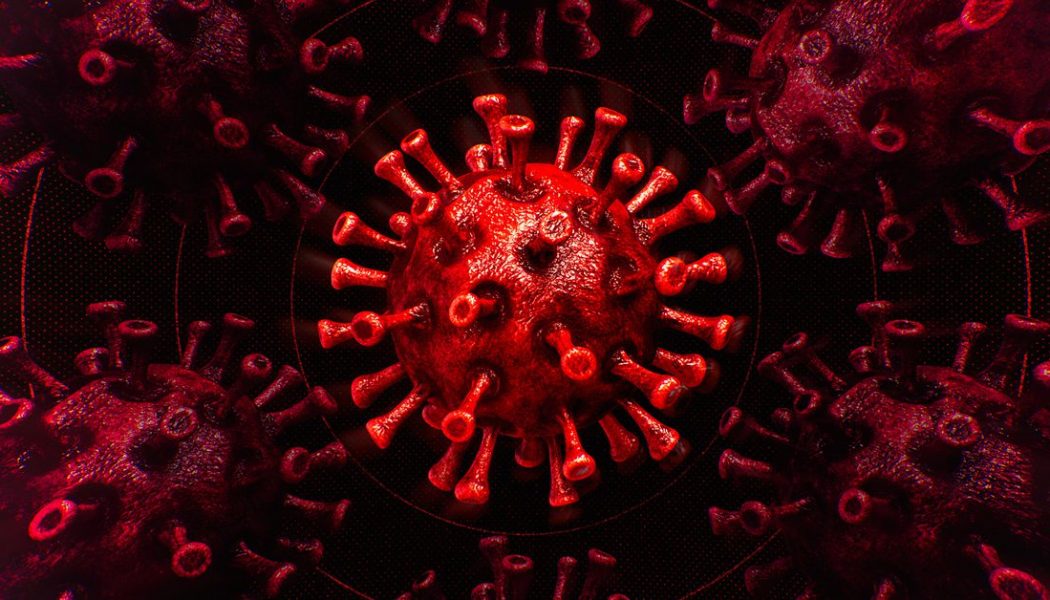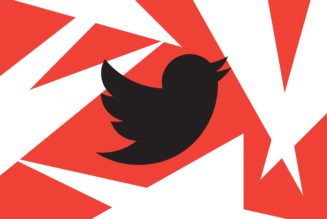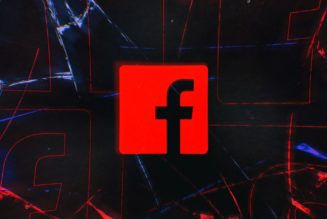
Last week I wrote about a set of predictions that I got spectacularly wrong. Today, to soothe my fragile ego, let’s talk about a case where I was a closer to the mark.
In April, after talking with public health experts, I wrote about why Bluetooth-based approaches to finding new cases of COVID-19 seemed likely to fall short. A combination of human behaviors and technical challenges seemed likely to limit the effectiveness of a pandemic response scheme that relied on our phones passively pinging each other wherever we went. At the same time, I wrote, a more old-fashioned approach — using human beings to make phone calls and identify people who may have been exposed to the disease — seemed much more promising.
Somewhat hilariously, at least to me, the very next day Apple and Google announced that they were building a Bluetooth-based COVID tracking system. (Originally they branded it as “contact tracing,” but after talking to more people they switched to the more accurate “exposure notification.”) My qualms about its effectiveness aside, it was clearly a good-faith effort to make a real difference in reducing the spread of COVID-19, and over the next several weeks Apple and Google worked diligently to refine their approach based on the feedback they were getting.
The first phase of the project, which allows whitelisted public health apps to make enhanced use of the Bluetooth features of your phone, launched on May 20th with three US states on board. The hope was that more states would sign on, creating a more effective patchwork of notifications across the country. But as David Ingram reported at NBC News over the weekend, that’s not what’s happening.
States that had committed to using contact tracing apps or expressed interest are now backing away from those claims. The few states that have rolled them out have seen only tepid responses. And there are no indications of any momentum for the apps at a national level.
California Gov. Gavin Newsom was an early supporter of contact tracing apps, saying on the same day that Google and Apple announced a joint project that he wanted to ”build that capacity and partnership” as part of the state’s plans. Two months later, the nation’s most populous state isn’t using any apps or cellphone tracking technology, said Ali Bay, a spokesperson for California’s Public Health Department.
Among the challenges: it’s hard to get people to download these apps; there has been no endorsement of the approach — or coherent response strategy — from the federal government; and it’s unclear that Bluetooth-based approaches have been all that effective even in countries where COVID-19 is better under control. (Norway abandoned its contact-tracing app on Monday after it reached just 10 percent adoption.) It seems possible that the second phase of the Apple-Google plan, in which exposure notification becomes a system-level feature of iOS and Android, could give exposure notification new life.
In the meantime, though, it’s hard not to feel like the tech giants’ work to date has been mostly for naught. They lived up to their end of the bargain, building a workable system with meaningful privacy protections in a very short period of time. But then the federal government all but went missing, leaving the pandemic response largely to individual states and their governors, and much of the promise of exposure notification evaporated as a result. (One thing the federal government did do was promote public-private partnerships to increase testing capacity, and that effort also stumbled as this piece about a Utah initiative by Robert P. Baird lays out.)
So what is working? I’m pleased to say that human beings making phone calls have largely lived up to their promise. In the New Yorker, Ben Wallace-Wells looks at the experience of Massachusetts, which rapidly spun up an effective contact-tracing scheme known as the Community Tracing Collaborative. There aren’t a lot of feel-good stories in pandemic news these days, but this is one of them. When Massachusetts set up its collaborative, more than 22,000 people applied, and in the past few months they’ve effectively identified a huge chunk of potential new exposures. Wallace-Wells writes:
Throughout the spring, the Massachusetts contact-tracing program got faster. It took between three and four days for the C.T.C. to learn of a positive test, but after investigators had that information they were able to reach seventy per cent of cases, and contact tracers were then able to speak to seventy-four per cent of those cases’ contacts. This still meant that nearly half of potential contacts never spoke with anyone working for the tracing program. Crystal Watson, a health-policy expert at Johns Hopkins, who co-authored a report in April on contact tracing, told me that these numbers were better than she had expected. “Even if you’re only getting half of all contacts, that’s a lot better than we would have been doing without the program,” she said.
Wallace-Wells reports that the federal government has allocated funding for contact tracing nationwide, but only at about one-sixth of the $3.6 billion experts say will be necessary to get the job done. Among the missing pieces: funding for what the public health world calls “care resource coordinators,” who help solve practical problems for people who are sick and need to isolate — getting them food, for example, or medicine. Public health experts say problem solvers like these are necessary to ensure that sick people remain isolated, but cash-strapped public health agencies are reluctant to pay for them.
The lesson in all this is not that Apple and Google should not have built an exposure notification system, or that the system they built is a failure. Rather, it’s that Silicon Valley was only ever going to be able to provide one or two pieces of a comprehensive response to COVID-19 — and elected officials and public health agencies have mostly failed to provide the rest. In April, it was easy to see that Apple and Google’s approach alone couldn’t stop the spread of the disease. What I couldn’t foresee back then was just how alone they would be.
The Ratio
Today in news that could affect public perception of the big tech platforms.
⬆️ Instagram CEO Adam Mosseri vowed to take a hard look at how the platform impacts Black users, specifically around harassment and verification. He also wants to examine how the app’s algorithms may be biased against black users.
⬆️ YouTube created a $100 million fund to amplify black creators. That’s real money. (Taylor Lyles / The Verge)
⬆️ Google will now prevent advertisers in the categories of employment, housing and credit from targeting customers using demographic data. The move is designed to prevent racist hiring and lending practices. (Ginny Marvin / SearchEngineLand)
⬇️ Twitter reactivated the ZeroHedge account after saying it had initially made an error in removing it. Not exactly confident-inspiring work over there on this one. (Siraj Datoo / Bloomberg)
Governing
⭐ Russia’s new disinformation strategy is to identify divisive content from real Americans and help it spread through low-profile networks of social media accounts. It’s easier and more effective than creating campaigns of their own. Nicole Perlroth at The New York Times has the story:
In February, intelligence officials warned House lawmakers that Russia was interfering in the 2020 campaign to try to get President Trump re-elected, and that Russia intended to interfere with the 2020 Democratic primaries as well as the general election.
“Russia’s trolls learned it is far more effective to find the sore spots and amplify content by native English speakers than it is to spin out their own wackadoodle conspiracy theories,” said Cindy Otis, a former C.I.A. analyst who specializes in disinformation.
Mark Zuckerberg and Priscilla Chan told employees at the Chan Zuckerberg Initiative that they were disgusted by the president’s recent comments about protesters. Employees of the largely Facebook-funded initiative are pushing Zuckerberg to take action. (Michelle Toh and Donie O’Sullivan / CNN)
Dozens of Tunisian, Syrian and Palestinian activists and journalists say their Facebook accounts have been deactivated over the last few months. Many use the platform to document human rights abuses in the Middle East. (Olivia Solon / NBC)
Sen. Josh Hawley is preparing legislation that could make Section 230 protections contingent on tech platforms not allowing advertisers to target users based on behavioral data. SIGH. (Cristiano Lima / Politico)
Amazon lawyers told lawmakers Jeff Bezos is now willing to testify before a House antitrust investigation into the market power of major tech companies. Amazon had previously resisted making him available, prompting lawmakers to threaten to legally compel Bezos to testify. The House has also reached out to other Big Tech CEOs about testifying. (David McCabe / The New York Times)
New York’s attorney general is interviewing Amazon warehouse workers about working conditions. New York Attorney General Letitia James launched a probe into the company’s labor practices in April. (Annie Palmer / CNBC)
Tech companies are calling for a nationwide law to govern facial recognition technology. But a heated election year and a global pandemic are creating the perfect conditions for inaction or hasty corner-cutting. (Brian Fung / CNN)
The UK’s competition watchdog opened an investigation of Facebook’s $400 million acquisition of Giphy. Facebook’s defense is that Giphy would have died if it hadn’t been acquired, which I find … mostly pretty persuasive. (Ingrid Lundgren / TechCrunch)
Industry
⭐ Amazon, Apple, Facebook, Google and Microsoft are aggressively placing new bets as the global economy is reeling from a pandemic-induced recession. They’re deliberately laying the groundwork for a future where they will be bigger and more powerful than ever. Here’s New York Times reporter Mike Isaac:
In doubling down on growth in a time of economic pain, the largest tech companies are continuing a pattern. In previous recessions, those that invested while the economy was at its most vulnerable often emerged stronger. In the 1990s, IBM used a recession to reorient itself from a hardware company into a software and services company. Google and Facebook both rose out of the dot-com bust about 20 years ago.
Apple, whose iPhones now dominate computing, doubled its research and development budget for two years during the downturn in the early 2000s. That led the company, which nearly went bankrupt in the late 1990s, to create its iPod music player and iTunes music store — and eventually the iPhone, the App Store and an unbridled growth streak, said Jenny Chatman, a professor at the Haas School of Business at the University of California, Berkeley.
Employees of Apple, Google, and Microsoft raised millions of dollars for the Black Lives Matter Foundation thinking it’s the international racial justice movement seeking to end police brutality. In reality, the organization isn’t affiliated with the Black Lives Matter movement. Its mission is “to bring the community and police closer together.” (Ryan Mac and Brianna Sacks / BuzzFeed)
Facebook’s first deepfake detection challenge found 65 percent of fakes. Not terrible, but lots of room for improvement. (James Vincent / The Verge)
Facebook’s chief diversity officer will now report directly to Sheryl Sandberg. Neglected to mention this during last week’s discussion of internal dissent at the company. (Megan Rose Dickey / TechCrunch)
ByteDance announced plans to shut down two of its video sharing apps in India — its biggest overseas market. It urged users to move to TikTok. (Manish Singh / TechCrunch)
Things to do
Stuff to occupy you online during the quarantine.
Get a new email address. I wrote about Hey, a wild opinionated new email service from the makers of Basecamp. I mean this when I say it: It might be the most interesting new email product since Gmail.
Take a Zoom call with a celebrity on Cameo. The celebrity shout-out company has found a way to cure Zoom fatigue. Anybody want to spend $15,000 to talk with Jeremy Piven for 10 minutes?
And finally…
NO your email did NOT find me well, it found me ravaged with STRESS AND THE EFFECTS OF TIME
— Anne T. Donahue (@annetdonahue) June 15, 2020
middle siblings have more de-escalation training than cops do
— Pallavi (@PallaviGunalan) June 9, 2020
you shop at https? cause your outfit is ://
— Derek Guy (@dieworkwear) June 14, 2020
Talk to us
Send us tips, comments, questions, and contact-tracing solutions: casey@theverge.com and zoe@theverge.com.










